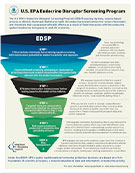October 24, 2016
Exposure to EDCs in the U.S. and EU: What They’re Saying about the Alleged Health Care and Lost Earnings Cost Estimates
A series of recent economic analyses by Trasande et al. attempts to sound an alarm in both the U.S. and European Union over staggering health care costs and lost earnings estimates associated with diseases allegedly linked to low-level exposure to endocrine disrupting chemicals (EDCs).
The first paper, “Estimating burden and disease costs of exposure to endocrine-disrupting chemicals in the European Union,” part of a four-part series published in March 2015 in the Journal of Clinical Endocrinology and Metabolism, claims that EDC exposures in the EU cost anywhere from €81.3 billion to €269 billion annually.
An October 2016 follow-up paper, “Exposure to endocrine-disrupting chemicals in the USA: a population-based disease burden and cost analysis,” published in The Lancet Diabetes & Endocrinology, alleges that annual health care costs and lost earnings from daily exposure to EDCs in the U.S. are in excess of $340 billion.
The astronomical figures estimated in these papers have generated significant media attention around the globe and citations by policymakers. However, coverage of the studies fails to point out the many obvious flaws with the authors’ economic analysis and underlying assumptions, including:
- The research linking exposure to specific chemicals to particular health problems does not sufficiently prove causation. Rather, researchers assume that some correlations that have been inconsistently and incompletely observed in a few studies represent causal associations. Yet, researchers’ projection of extremely high economic impacts relies on the assumption that low-level exposure to chemicals causes health effects.
- Most of the chemicals included in the paper are not endocrine disruptors, a term that, if used responsibly, is reserved for substances proven to cause adverse health effects through interaction with the endocrine system. The authors themselves have previously conceded that many of the chemicals they cite do not meet the World Health Organization’s widely-embraced definition of an EDC. Instead, they implicate substances that have been shown to interact with the endocrine system similar to the way in which Vitamin D, cocoa, and caffeine naturally do.
Other governing bodies, medical doctors, scientists, and science writers agree, cautioning readers not to give serious consideration to neither the EU nor U.S. cost estimates, given their substantial flaws:
European Commission (on the EU analysis)
“Estimates on costs of diseases related to exposure to EDCs which were recently published should be taken with caution. There are concerns over the validity of these estimates and the methods used to calculate them, which are linked to the scattered evidence.”
Richard Sharpe, Ph.D. Professor of Reproductive Health Research, University of Edinburgh (on the EU analysis)
“Most of the content of these publications is interpretation and informed speculation and none of us should lose sight of this…What worries me about this approach is that…these highly presumptive estimations inevitably become viewed and presented as being far more solid than they actually are.”
Roeland J. Middelbeek, MD, Joslin Diabetes Center (on the EU analysis)
“Producing cost estimates to shape policy may be helpful in promoting certain causes, but it should be done with caution. The current range of annual cost estimates spans two orders of magnitude (€2.5 billion to 239 billion) and underscores the high levels of uncertainty that arise around each of the decision points in the analysis. The authors’ median cost estimate of €157 billion (over 1% of EU gross domestic product) annually seems implausibly high if it is indeed just the ‘tip of the iceberg’.”
Joseph Perrone, Sc.D. Chief Science Officer, Center for Accountability in Science (on the U.S. analysis)
“Unfortunately, like many other headline-generating studies, this paper is based on flawed science. . . . In pegging the cost of endocrine disruptors at $340 billion, the researchers first had to assume that each chemical it examined was, in fact, an endocrine disruptor, even though such allegations are unsupported by science. They also had to assume that exposure to chemicals caused particular health problems. This is a major assumption, considering most studies referenced in the paper show only small correlations.”
Julie Gunlock, Director, Culture of Alarmism Project, Independent Women’s Forum (on the U.S. analysis)
“Trasande and his colleagues relied on computer models—a questionable and often flawed way to do scientific studies. Trasande also likes to draw correlations between a substance or environmental cause and a disease. A firm rule in scientific research is that correlations, while sometimes interesting and instructive, do not mean causation. . . . Trasande is an activist scientist, trotting out junk science at rapid speed to further his political, policy, and regulatory goals. That’s not good science. . . . The scientific community must do more to reign in activist scientists and dubious scientific studies that create fear and alarm where no documented danger exists.”
Ronald Bailey, Science Journalist (on the U.S. analysis)
“…a correlational study that claims to have sufficiently tortured the data, ah, quantified the economic harm that these estrogen-fueled epidemics is causing. . . . torturing the data will in fact make them confess to anything.”



